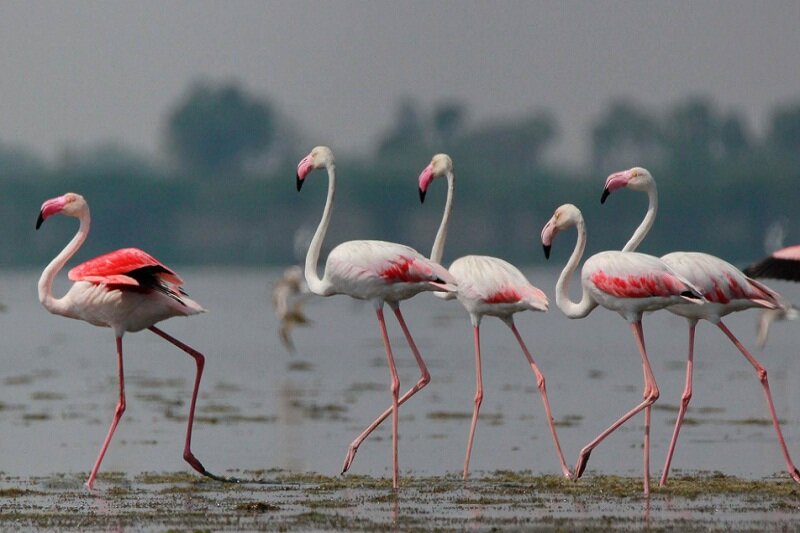Flamingos return to Gavkhuni wetland after 2 years

TEHRAN – Flamingos landed once again in recently replenished Gavkhuni wetland in central province of Isfahan, after 2 years, the provincial department of environment deputy director has said.
Long-dried Gavkhuni wetland was revived the heavy rainfalls, hence migratory birds came back to the wetland once again, IRNA news agency quoted Hossein Akbari as saying on Saturday.
The wetland is now home to a variety of migratory birds including, ducks, geese, sternidae, pelicans, and grebes, he added.
Flamingos have left the wetland since past 2 years following the wetland drainage and lack of nutrition, however, they winged their way back to the wetland after the water flow into the lakebed, he explained.
He went on to note that some 100-150 flamingos have already migrated to the wetland to spend the spring in the area.
Higher evaporation rates makes the wetland’s condition worse than other wetlands in the country, in addition to not being provided with its water right, he lamented, adding, we must be provide its water right to keep it alive.
The water right of the wetland is about 176 million cubic meter per year.
Gavkhuni wetland, stretching to 47,000 hectares, is a salt marsh with an average depth of about 1 m. which is located on the terminal basin of the Zayandeh-rud river.
It is the 19th wetland in Iran designated as a Wetland of International Importance on Ramsar list, which as defined by the Ramsar Convention for the conservation and sustainable use of wetlands, recognizes the fundamental ecological functions of wetlands and their economic, cultural, scientific, and recreational value.
The Convention was adopted in the Iranian northern city of Ramsar in 1971 and came into force in 1975.
Based on the latest data published on Friday by National Drought Warning and Monitoring Center affiliated to Iran’s Meteorological Organization, precipitation in the country increased to 296.2 from 139.2 millimeters (mm) in the previous water year, demonstrating a 112.8 percent rise.
The amount also raised in comparison to the long-term average of 211.8 mm, amounting to 39.8 percent.
Isfahan province also surpassed both last year and long-term precipitation amounts of 89.1 and 150 mm, respectively, as 185.2 mm poured over the province.
FB/MQ/MG
Leave a Comment